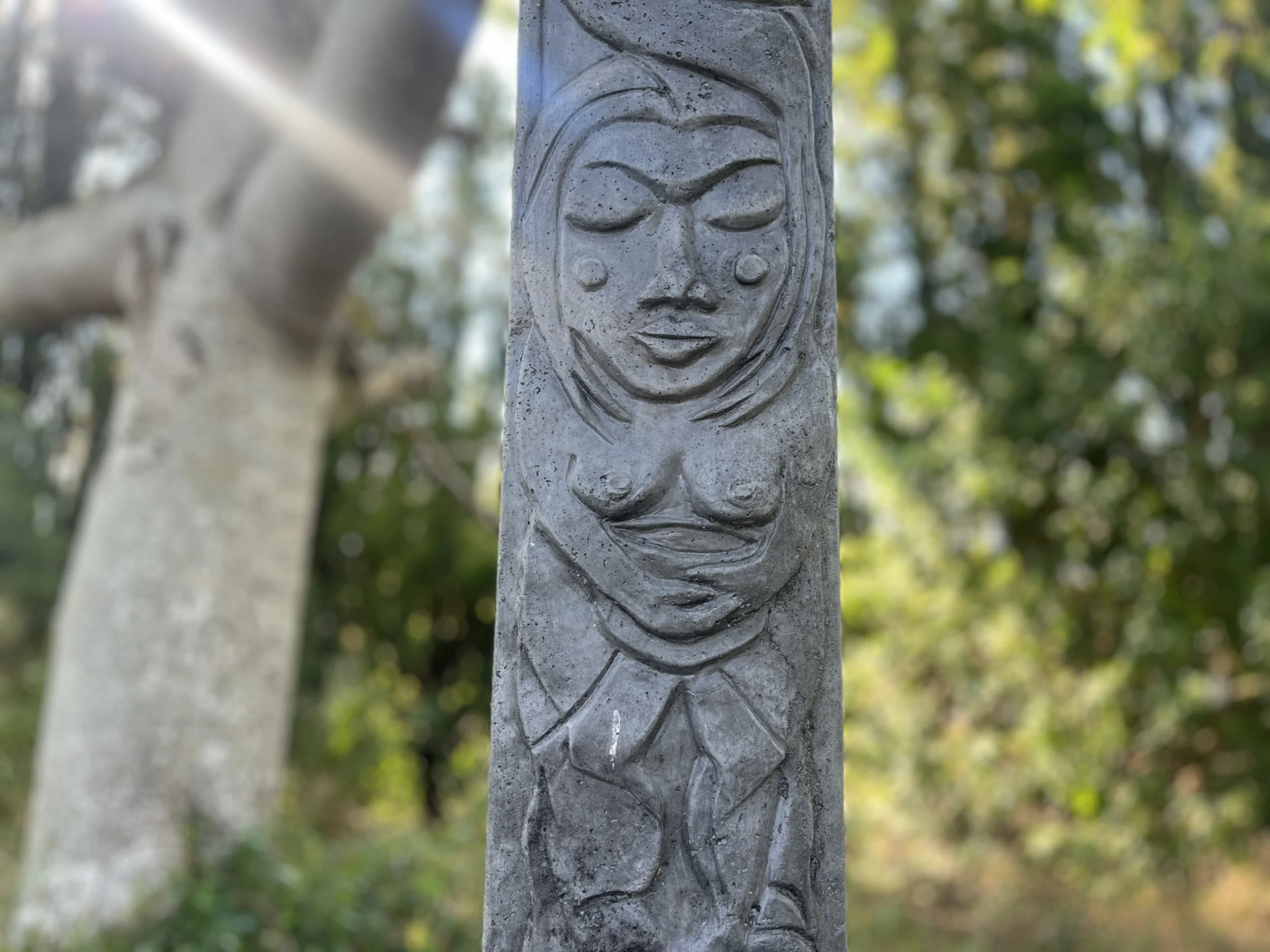“Fishing Family (‘Ohana Lawai’a)”
(Concrete) 78” x 8” x 3”
By Brian Savage
Fishing Family is a totem sculpture originally conceived to demarcate coastal areas in dedication to the ancient family, their sustainable fishing practices, and the fish ponds and fishing grounds themselves.
Blending with the rock, the lava-like concrete has low-relief imagery symbolizing not just the feeding, care, and protection of the family, but also the ancient Hawaiians' deeper understanding of the ocean’s life cycles and how important it was to protect their food source.
Imagine, hundreds of years ago, with a vast, plentiful ocean teeming before them and disastrously greedy commercial fishing operations centuries away, ancient Hawaiians were already enacting conservation and preservation. The totem serves as a reminder to take only what is needed and respect the wise ways of those before us.
About the Imagery
The top group of triangles are a triplicity: land, sea, and sky; past, present, and future; people, spirits, and nature; male, female, and spirit. Triangles also represent a spear point. At the top of the totem, the spear points down, signifying holding ground in a firm, less aggressive way.
The I’iwi bird and her baby nest in the hair of the inward-looking woman, who has gathered foods from the land to add to the meal of the caught fish.
The outward-looking fisherman stands at the sea’s edge with his catch. Below, under the sea, swims the fish not caught—the one that’s allowed to reproduce, grow, and continue the life cycle.
The crab symbolizes protection of the home and family as its legs and claws grip the shore’s lava rock in stormy times. The crab reminds us to hold fast even as strong waves lash the shoreline.
Finally, the bottom triangle brackets the entire piece with the spear point triplicity pointing upwards, signifying hunting and more offensively and outwardly protecting the family.
Sustainable Fishing Practices
In ancient times, many fish species had strict seasons, allowing the fish a part of the year to reproduce and grow without strain to their numbers. The fish were also fed, training them to return to a specific spot, aiding in the ease of netting them later when they were in-season.
Likewise, Hawaiian aquaculture by the building and tending of fish ponds was another intelligent way to fish sustainably. Small fish would enter the pond where they were protected from larger predators, allowing the fish to feed and grow, and be caught more easily.
Both were good practices to ensure future sustenance. As current fish stocks further decline from overfishing, wasteful hunting, wasteful bait-taking, pollution, and commercial activity, these older, sustainable practices are something we could learn from today at local fishing grounds where most fish species have completely open seasons, without bag limits, and rely upon self-regulation.
It is my hope that the totem speaks to remind us that we should care for and respect the life and resources from the ocean better than what the State allows.
Brian Savage
For more information about the Hawai’i Fishing Regulations, please visit: https://dlnr.hawaii.gov/dar/files/2022/06/fishing_regs_Jul_2022.pdf
